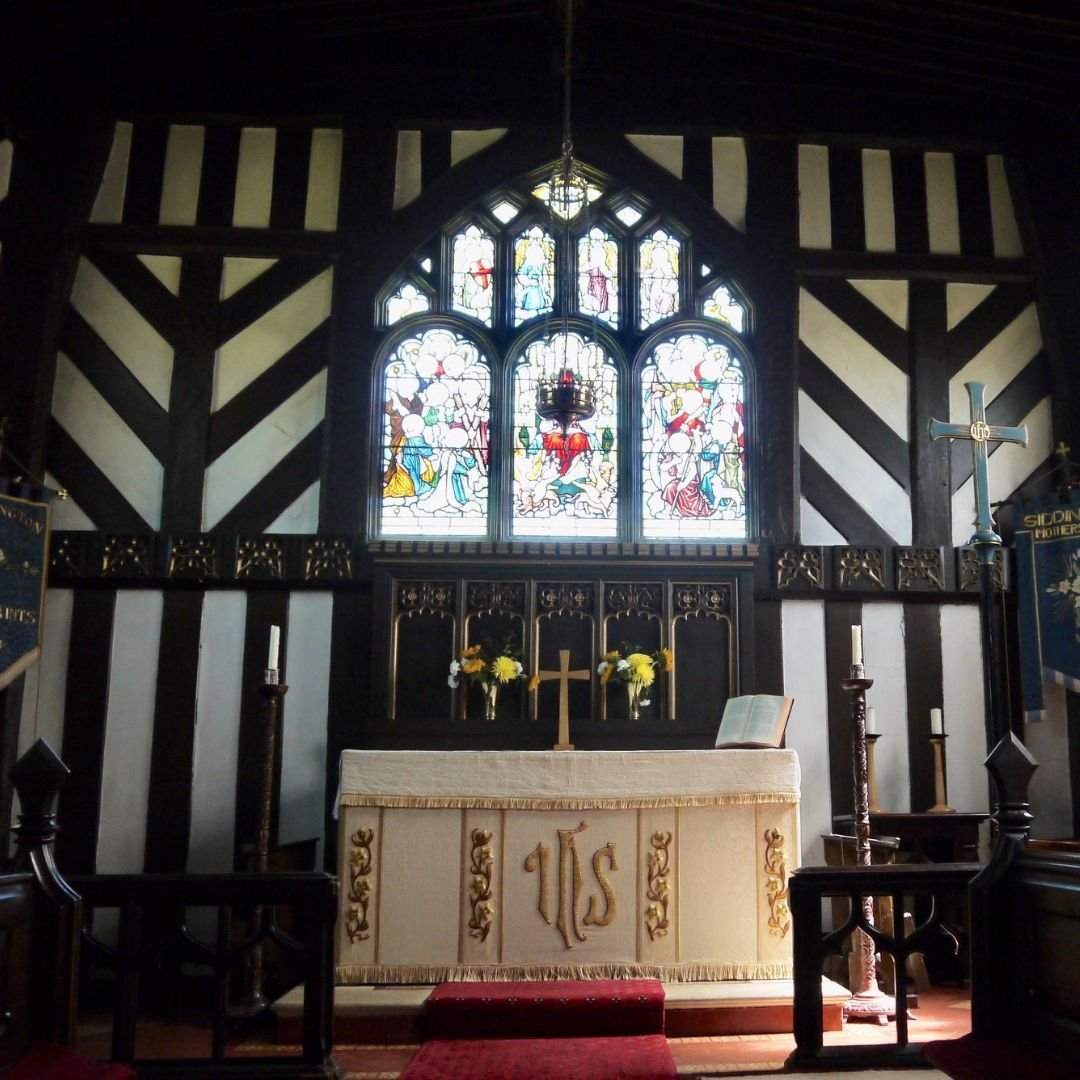All Saints Church, Cheshire: Grade 2 Listed Gem
All Saints Church in Siddington, Cheshire is a magnificent Grade 2 listed historic building.
It is not only delightful on the outside, but also a treat on the inside too.
Although the exact age of the building is unknown, records at Prestbury Church mention a chapel at Siddington in wills dating from c. 1337 and 1474.
What is absolutely certain, however, is that it was first consecrated for preaching in 1521.
In 1721, a licence was granted for burial in the churchyard and baptism, but it was not licensed for marriages until 1883.
The church has a timber frame, filled with wattle and daub plaster.
It had a thatched roof for much of its life, but sometime in the 1700s, it was decided to reroof the building with heavy flagstone slabs, causing the long walls to bulge.
They were encased in a brick ‘sandwich’ in 1816.
Just to the left of the south door, at ceiling height, it is possible to see the top of one of the carved wooden pillars, made from single pieces of oak, that still line the whole building.
Immediately facing the door is the ‘Animal Window’ commemorating the famous Animal Services held each June in the churchyard for some 30 years.
The screen between the main part of the church and the choir stalls dates from the 1300s, and it is still possible to see the marks of the adze tools used to shape it.
Behind the left hand choir stalls are two low windows which are thought to have been ‘Leper windows’.
These would originally have been unglazed, and allowed the diseased to watch the services from outside.
Nowadays, the church is known to many as the Corn Dolly Church thanks to the fabulous displays of this traditional craft made by the church’s Emeritus Reader, Raymond Rush.
When a font was placed in the church in 1792, two men from Gawsworth were threatened with excommunication for interfering with its installation.
The present font was installed in 1853, (and the old one sold for 10 shillings!)
The Pulpit was probably once the top section of a “Three Decker” from Marton Church, and has a date of 1633 carved on it. The reading desk might also be from this structure.
The screen between the main part of the church and the choir stalls dates from the 1300s, and it is still possible to see the marks of the adze woodworking tools used to shape it.
Behind the left hand set of choir stalls in the Chancel are two low windows which are thought to have been “Leper windows”.
These would originally have been unglazed, and allowed the diseased to watch the services from outside.
Outside the church door is a grade 2 listed preaching cross.
In the churchyard are a pair of simple white crosses commemorating two Canadian airmen.
While attempting to land, a wingtip caught a support stay on a flagpole, and the plane crashed. Lt Alex MacGillivray died that day, while Lt Claude Watchorn died the following day.
Their simple graves were erected near the Bickerton family tombs in the churchyard and a pair of oak trees were planted on the crash site (one still stands).
With its long history and Grade 2* Listed Building status, this Church remains at the centre of a lively worshipping community, with services each Sunday at which you will be very welcome.
If you’d like to visit, the address is: Pexhill Road, Siddington, Cheshire, England, SK11 9JP.
If you enjoyed this blog post, please follow Exploring GB on Facebook for daily travel content and inspiration.
Don’t forget to check out our latest blog posts below!
Thank you for visiting Exploring GB.


















